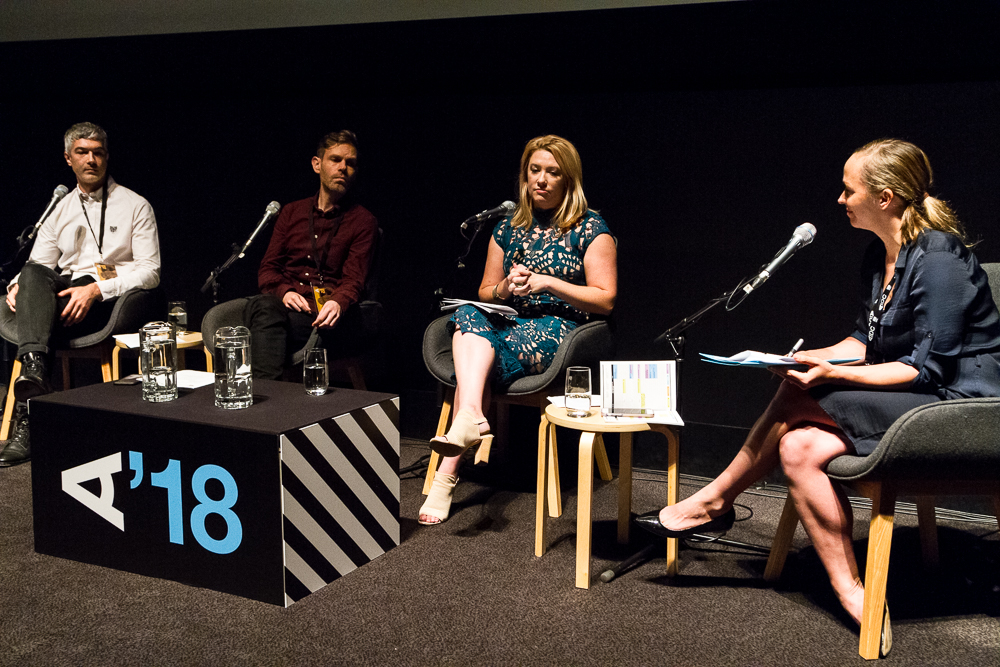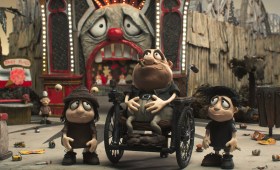Photo by Alice Moore on Unsplash.
Unlike other mediums, podcasts create enormous intimacy, enabling documentary artists to take over the audience and turn true life into poetic drama. Making this a reality was sometimes a challenge for the team behind Trace, but what they ended up with is a riveting audio documentary.
‘You can have the best of intentions for something like art and it’s not necessarily going to be translated or interpreted how you want; but Trace was and I think that’s something we’re proud of,’ said Rachael Brown, the series’ creator and an ABC investigative journalist.
Brown joined executive producer Tim Roxburgh and sound designer Martin Peralta on the panel Retracing: Crafting Story in Audio Documentary at the Australian International Documentary Conference (AIDC) to discuss the podcast’s journey from pitch to completion.
The Walkely-award winning series investigates the unsolved murder of Maria James in 1980 and homes in on potential suspects while focusing on the lives of James’ two sons. This was the first time the ABC had endeavoured to produce a serialised true crime podcast of this nature.
Find a hook in a saturated market
Roxburgh said he could see Trace’s appeal early on, but had to work to ensure it differentiated itself from a market awash with other cold case podcasts.
‘Ask any homicide cop about their biggest regret and they’ll tell you about the one that got away; that case they couldn’t quite crack,’ begins Trace. This opening line was re-worked from earlier takes to create a point of difference to other audio documentaries saturating the market.
‘I was cautious about getting involved [in the project] because I wasn’t a true crime fan,’ Roxburgh admits. ‘But the way that Rachael had approached the subject matter convinced me there was something far greater here than a morbid interest in a murder.
‘I felt like the initial version we recorded didn’t give me any additional reason to care about this cold case. There are so many cold cases out there and there are so many people waiting for answers, families that have had horrible things happen.
So what was the appeal of this particular case?
‘For me this question was answered the first time when I started hearing from the detective Ron Iddles. Ron has had an entire career as a detective and yet this is the one case that sticks in his brain and it was because it was his first homicide and he’s never solved it,’ Roxburgh said.
Edit, edit, edit
Brown worked on the podcast for a year in her own time in between her job as a reporter before the podcast was commissioned and she was then paired with a production team. She spoke of the script editing process, which often resulted in lengthy debates over what to leave in and take out.
‘Tim stripped it bare – the insights, observations and beautiful characters – I just thought, “Oh god!” And he said: “Unless it progresses the plot, its gone.”’
‘I wanted more ethereal observations and insights, but it was great that it was pared back.’
Roxburgh said trusting his instincts about what he found interesting and compelling in the James’ case informed his decisions when making the podcast, which was a learning process for everyone involved.
‘We got rid of all adjectives. The first episode was important in that I didn’t want to get into it on the basis that we assume the audience is going to care about this family. We needed to give the audience reasons to care and reasons to keep listening.
‘There was a lot of character description in the first episode, which I took out. Not being a true crime fan, I found it traumatic describing these people you know will get killed. The aim was to have you get to know the characters through the plot rather than the other way around, setting them up, then putting them on a journey.’
Read: A word in your ear: podcasts and the arts
Keep it short
The decision to initially produce only four episodes was a strategy to keep audiences engaged as opposed to following the structure of a crime podcast such as S-Town, made by the creators of Serial and This American Life.

Panellists at AIDC. Image credit: Teresa Noble.
‘We couldn’t take for granted an audience like the This American Life team could,’ Roxburgh said when discussing the potential length of episodes.
‘They had built this devoted following that followed them wherever they went and the episodes were long and literary.
‘We couldn’t take the audience on a 50 minute episode journey where they didn’t know where they were heading. The ABC hadn’t proved itself in that space and we didn’t want to give the audience an excuse to bail out at all.’
Adapt tone for context
‘We had to make Rachael less expressive,’ Roxburgh said of Brown, who is an experienced news reporter but had never recorded audio for a podcast before.
‘What I didn’t really know until we were in the middle of doing it was that the news voice is quite expressive, because you’re trying to sell a story to the entire nation,’ he said.
‘But if you have headphones on it’s like: “don’t try and sell this to me, I am here because I want to be here.” We put her closer to the mic and I kept saying: “less expression”– because when you’re talking to a friend you’re just telling them a story.’
Brown said she had to unlearn 15 years of voice training as a journalist to be able to deliver the Trace script in a more colloquial tone.
‘As a broadcaster I am feeling like I have to deliver to however many thousands of people and the team needed to get me in this mindset where I am just talking to one; all my colour and intonation had to be in this confined space.’
Similar to tone, the sound design also had to be adapted accordingly to fit in with the correct feel of the podcast which took time to nail. Peralta came to the project later in the piece and said he tried synthesizers and Aussie rock before he finally discovered the right musical touch.
‘There are some really hard moments and tough topics and personally I didn’t want to hear anything too much, I just wanted ambience and space,’ he said.
The audience was played the introduction of the first recorded episode alongside what became the broadcast version, which was considerably less dramatic. Peralta then discussed how he hit the right mix.
‘I fell on Icelandic scoring, similar to Broadchurch and the German composer Nils Frahm. And when I started putting their music in the mix I thought: “this is exactly how it should be.” So it’s this sparse sort of music, soft sounds. It doesn’t ever get in the way.’
Brown said it’s now a waiting game before the team can produce more episodes. While they wait, the coroner is deciding if the case will be re-opened; something that Brown said was challenging for viewers who just want to know what’s going to happen next.
‘For me it’s frustrating because I do genuinely want to be doing updates…This isn’t entertainment, it’s not fiction. I can’t write you an ending and I am not going to write you an ending. The James brothers have waited for 37 years. This anxiety and wait that’s pissing people off, that’s what they’ve lived with for 37 years and if we’ve nailed that feeling we’ve done a good job.’





